One of the most popular questions I see online and in my comments is “should I do cardio or weights first?”
The short answer is “it depends.” For the average gym-goer, it does not matter whether you complete cardio before or after you lift weights. For those with goals to get as strong as possible, cardio should be done after lifting, and for those who want to be runners, cardio should be done before lifting.
To expand on the “it depends,” below is a table to give you a general idea of the ideal cardio vs weight lifting timing.
| Are you a runner or endurance athlete as your main goal? | Perform cardio before any strength training. |
| Is your main priority to lose weight or get leaner? | Perform your weight lifting before your main cardio session. |
| Are you trying to get as strong as possible? | Lift weights before your main cardio session. |
| Are you training upper body today? | Dealer's choice. Get it out of the way in the beginning or save it until after lifting. |
| Are you training your lower body today? | I'm sure you're skipping leg day, but we recommend cardio post-workout. |
| Are you simply trying to get in shape? | Pick your poison. Many perform cardio first to get it out of the way. |
Let’s face it, no one really means it when they say they love doing cardio. Keeping your heart healthy with cardiovascular training is important. It can affect your muscle and strength gains, and you will need to learn to listen to your body.
Cardio is one of the most known (and hated) terms in the weight loss industry. The goal of cardio is to get your breathing and heart rate elevated over a period of time.
Most gym-goers use cardio to lose weight.
When you do any type of cardiovascular training, your body burns energy in this order:
- Carbohydrates – Stored as body fat and directly from foods
- Fats – Stored as body fat and from foods
- Proteins – Muscle mass is burned for the amino acids
To preserve muscle, you only want to burn carbohydrates and fats. Once your body is out of carbs and fats, it will start breaking down muscle for energy. This is why oftentimes endurance runners and triathletes lack muscle definition.
This is another reason why someone who uses cardio to lose all of their weight will look skinny fat. They are thinner but have the same lackluster appearance.
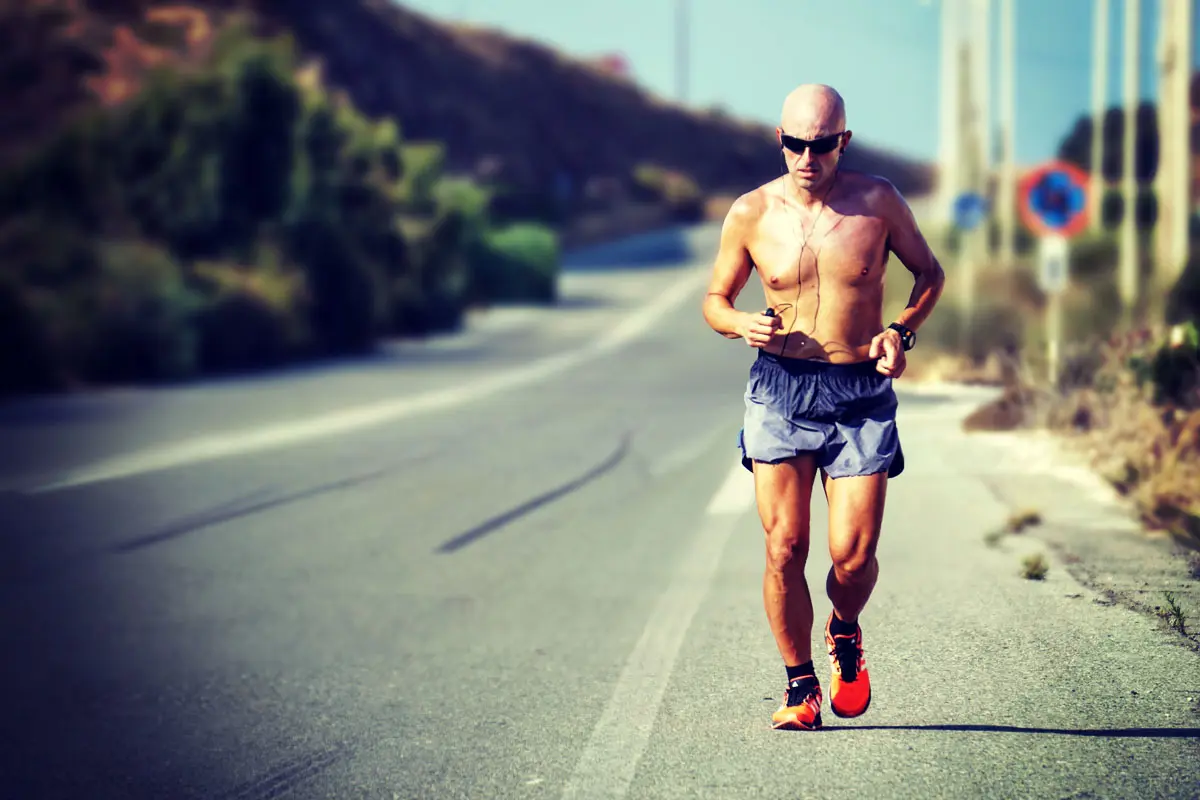
Should You Use Cardio to Lose Weight?
In order to lose weight, you essentially need to burn more calories than you eat. As your body starts operating in a calorie deficit, it will burn the excess carbohydrates and stored fat for energy. This is the simplest way to demonstrate weight loss.
Cardio should be seen as a calorie-burning heart-healthy activity.
Using cardio to try to out-exercise a bad diet is not going to help you win any physique rewards. Eventually, you get tired of putting in the effort for minimal results. When it comes down to using cardio vs weights for weight loss, we must go over a couple of things.
Just like there are different types of weight lifting routines, there are different cardio strategies. These strategies include low-intensity steady state cardio and high-intensity interval training.

Low-Intensity Cardio vs HIIT
Low-intensity steady state cardio is what it sounds like — slogging along on a treadmill or other cardio machine for 30 minutes or longer. You’re somewhat out of breath and sweating a bit, but you’re not pushing yourself that hard.
High-intensity interval training, or HIIT for short, is a great way to add cardio into your routine and not spend 30 minutes to an hour doing boring cardio. If you’ve hit a weight loss plateau, switching to a HIIT workout could benefit you.
The main goal of HIIT is to give you the benefits of traditional cardio without sacrificing muscle mass. The benefit is you can burn more calories than traditional cardio and increase your anaerobic performance.
High-intensity cardio has been shown to support heart and circulatory health. A stronger heart and better circulation is a great combination for building huge muscles.
This type of training is great because it forces your body into an anaerobic state while stimulating fast-twitch muscle fibers. Since burning protein takes oxygen, and anaerobic means “without oxygen,” this prevents the body from using muscle as its alternative fuel source.
Muscle Fiber Types
If you are looking to simply lose body fat or start doing endurance sports, traditional low- to moderate-intensity cardio will promote slow-twitch fiber growth. This is not optimal for muscle size and power.
So if you are a powerlifter, sprinter, or any type of power athlete, traditional cardio will essentially de-train your strength training and will affect your performance.
To compliment your strength training, HIIT cardio such as sprints or jumping rope could be the a better choice of cardio to lose weight.
Slow-Twitch Muscle Fibers
Slow-twitch muscle fibers are more efficient at using oxygen to generate fuel for extended muscle contractions over a long time. They fire slower than fast-twitch fibers and they can go a long time before they fatigue.
Marathon runners, distance bikers, and endurance athletes have an abundance of slow-twitch muscle fibers that allow them to do their sport for hours.
Low-intensity cardio such as walking or jogging promotes the growth of slow-twitch fibers.

Fast-Twitch Muscle Fibers
Fast-twitch muscle fibers use your anaerobic metabolism to create fuel and are much better at generating bursts of strength or speed for a short amount of time than slow-twitch fibers.
Fast-twitch muscle fibers are essential to being a good power athlete such as a powerlifter or a sprinter. These muscles generally produce the same amount of force per contraction as slow-twitch fibers, but they can fire more rapidly and fatigue much quicker.
To maximize muscle growth, exercise must stimulate fast-twitch fibers. The traditional means for accomplishing this is using strength training. These fibers need to be activated if you want them to grow.
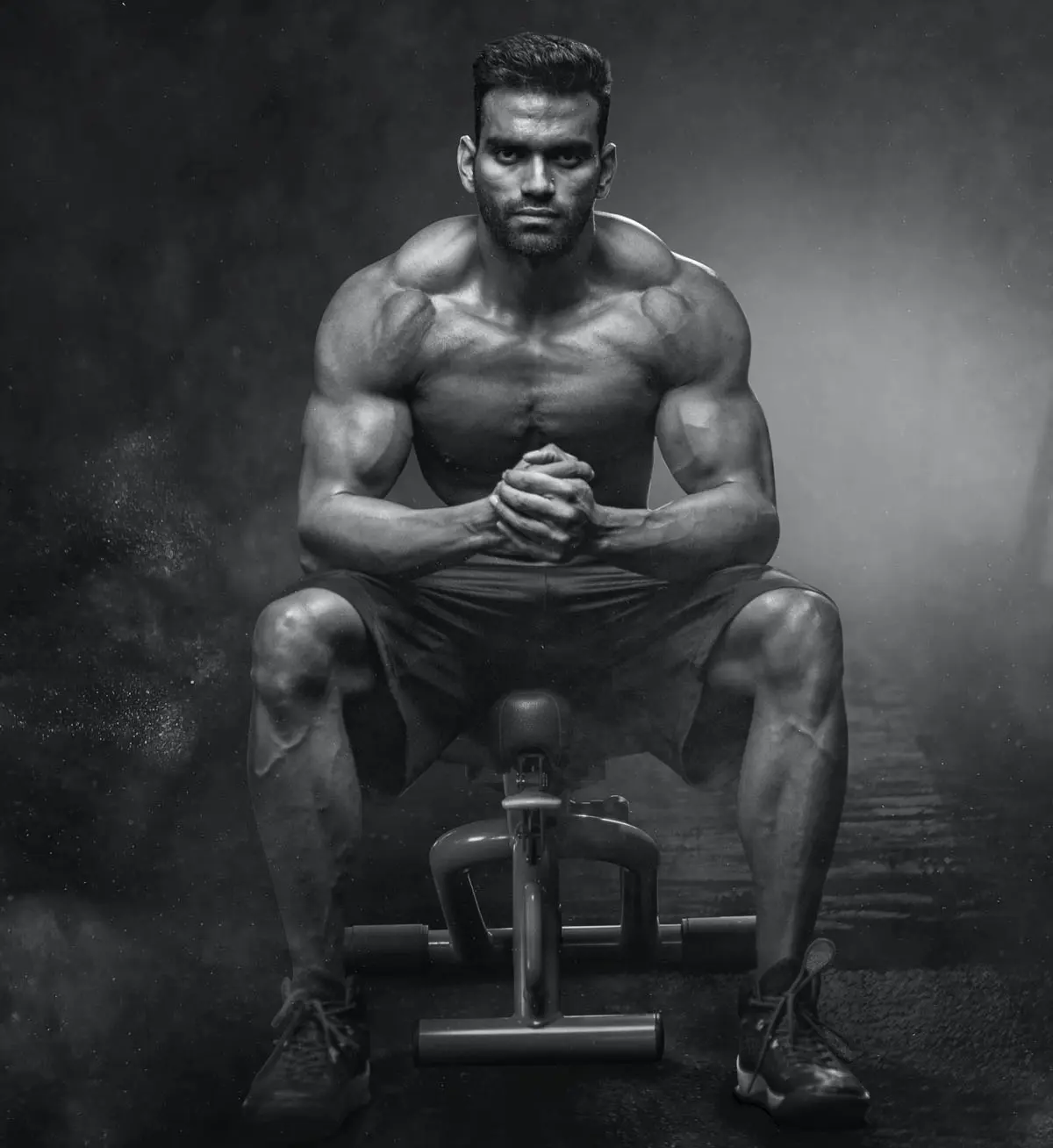
Will Cardio Burn Fat?
Performing cardio can burn fat as long as you don’t overeat. To get the most out of the fat-burning capabilities of cardio, you should also lift weights.
According to the U.S. Department of Health and Human Services, 150 to 300 minutes of moderate-intensity exercise or 75 to 150 minutes of vigorous-intensity aerobic exercise will yield substantial changes in your appearance and health.
Factors That Affect How Many Calories You Burn
Before you jump into your fitness goals, it’s important to understand that not all bodies burn the same amount of calories. There are a few factors that can drastically affect how many calories you burn — which leads to how quickly you can lose weight.
- Age – You will burn fewer calories the older you are.
- Body Composition – If you are muscular, you burn more calories than someone who has a higher percentage of body fat.
- Workout Intensity – You’ll burn more calories the more intense the workout.
- Gender – The Mayo Clinic reports that men will burn more calories than women.
- Daily Activity – If you sit at a desk all day, you’ll burn more calories than someone with a warehouse job.
- Weight – The more overweight you are, the more calories you’ll burn.
Generally speaking, the more out of shape you are, the more calories you can expect to burn.

What Cardio Exercises Burn the Most Fat?
When it comes to cardio, you should think outside of the box gym. You will burn the most calories performing exercises that aren’t limited to a machine in a gym.
The Center for Disease Control and Prevention (CDC) claims a 154-pound person can burn between 140-295 calories in 30 minutes performing a cardiovascular exercise.
Below is a list of a few exercises that burn the most calories in 30 minutes:
- Swimming burns 255 calories
- Running at a 5 mile per hour pace burns 295 calories
- Bicycling at faster than 10 miles per hour burns 295 calories
- Walking at a 3.5 mile per hour page burns 140 calories
- Hiking burns 185 calories
- Dancing burns 165 calories
Which Cardio Machines Burn the Most Calories?
If you are self-conscious or don’t live in an area that you can safely walk, bicycle, or go hiking, hitting the gym is the only option.
Rowing Machines
These bad boys are often covered in dust because everyone is afraid to use them. These calorie-torching machines are a great way to mimic the action of rowing a boat. You are recruiting multiple large muscle groups and will be gasping for air.
To get the most out of your workout, try to exercise at a faster speed, but experts recommend staying around 20 to 30 rows per minute. You’re going to hate it, but you’ll love the results.
Treadmill
If you have a treadmill at home, I’d put money on it you have clothes hanging on it. Treadmills are found at virtually any gym or fitness center.
You need to keep the intensity high for treadmills to be worth it — if you walk faster to the fridge to grab a snack than you do on the treadmill, you’re doing it wrong.
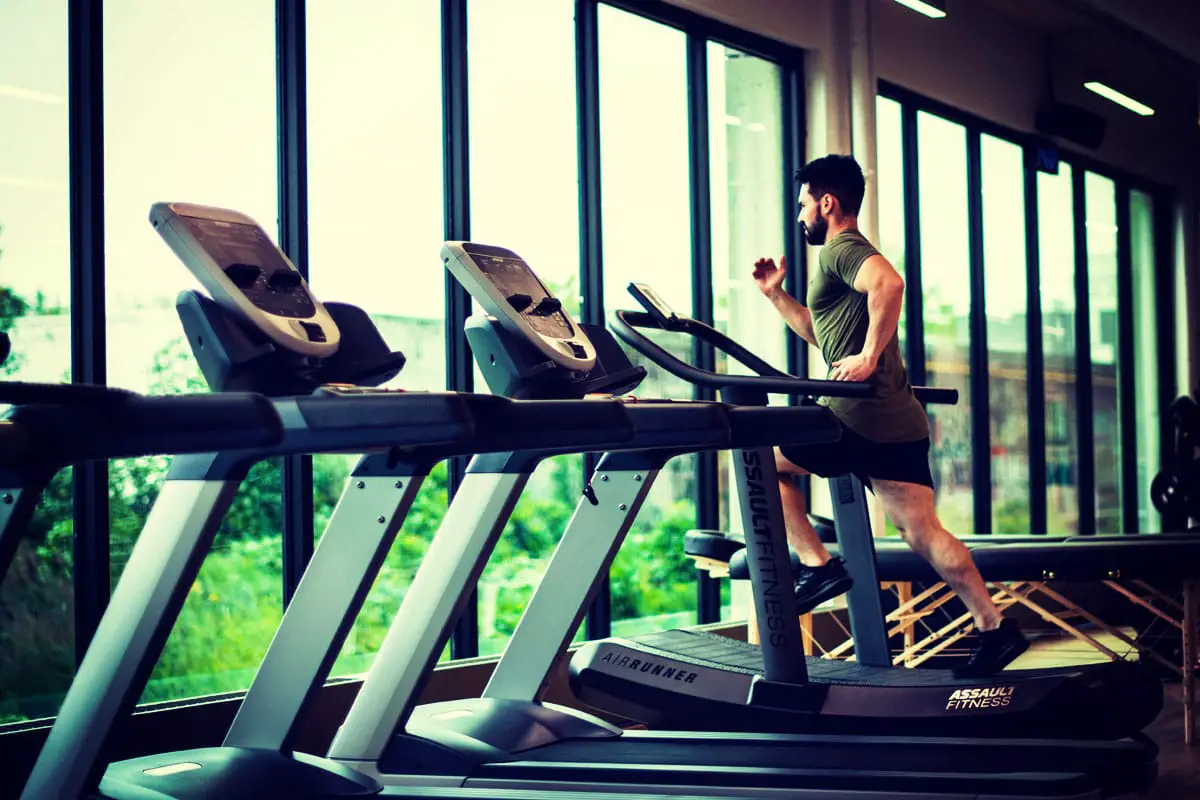
Try increasing the incline, increasing the speed, and utilize the high-intensity programs on the machine.
Stair Climber
These step mills and stair climbers are a fat person’s worst nightmare. But they can burn a lot of calories. I wrote an article on Tiger Fitness called “4 Things I’ve Learned from Losing 120 Pounds Twice” and I used the stair climber a bunch.
I usually went overboard — spending 60+ minutes on it and burning over 1,200 calories a session. Climbing stairs uses large muscle groups in your legs, which require a lot of calories.
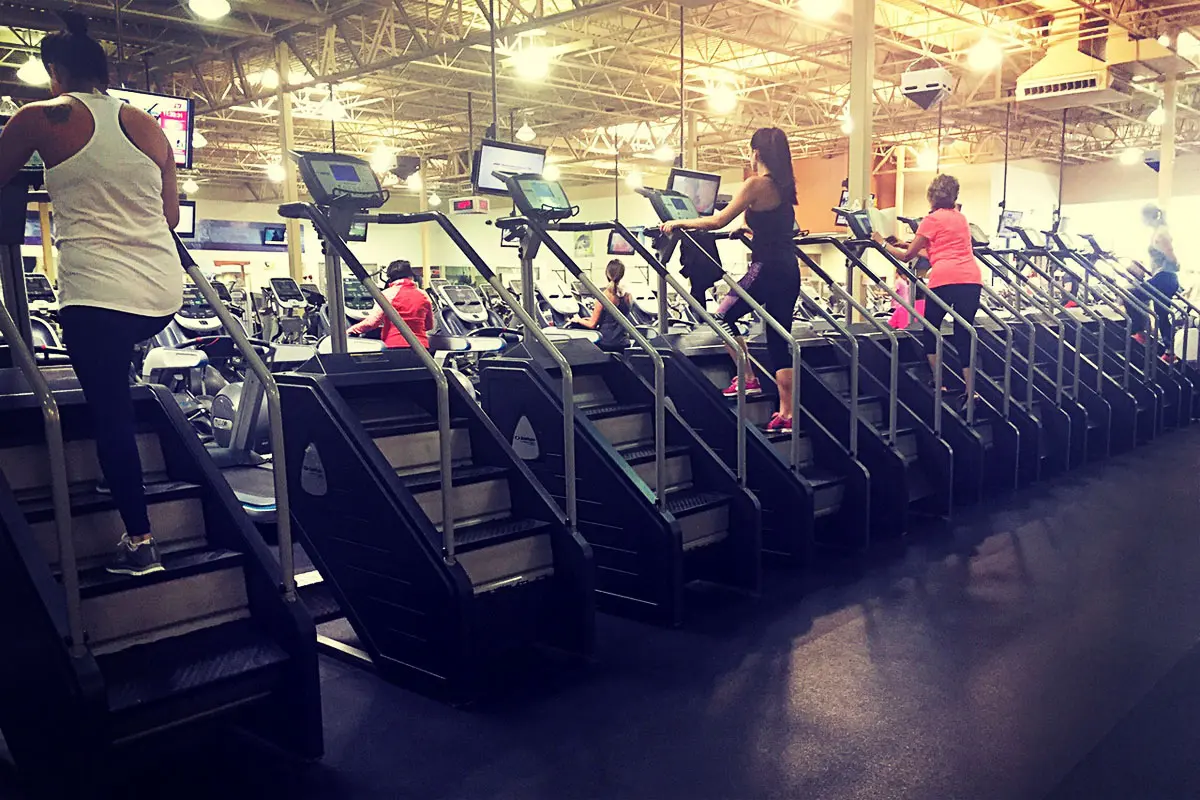
Stationary Bike
If you’re looking for a low-impact exercise, a stationary bike works well. The problem is you do not move as much as you do on a treadmill or stair climber.
Spin classes have become popular and it’s a great way to find a workout partner. Indoor cycling allows you to control your pace and difficulty level, without having to deal with that pesky weather.
To get the most out of a stationary bike workout, you must perform high-intensity intervals. This is going to increase your post-oxygen consumption which means your body will burn calories well after you complete the workout.
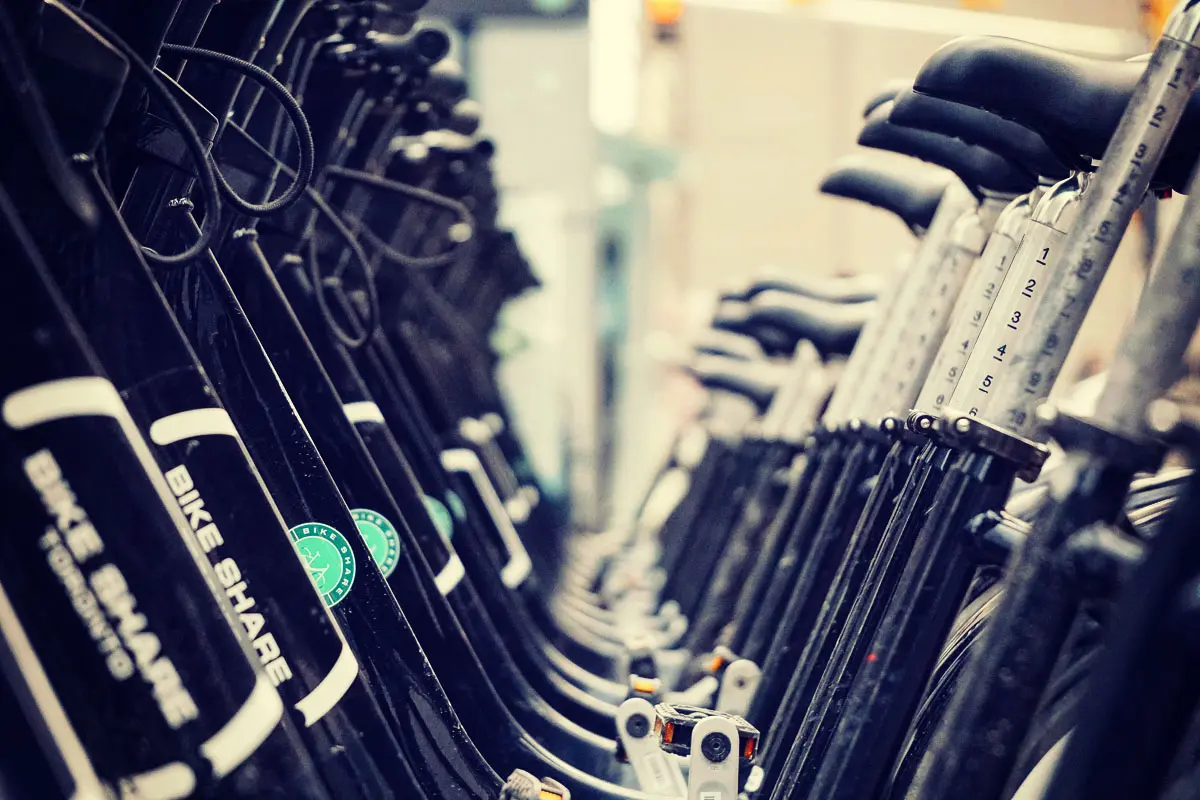
Elliptical
Last but not least is the elliptical machine. It’s a favorite to many gym-goers because of its low impact and full-body movement. The downside is you should perform HIIT workouts to get the most out of your workout on this machine.
If you can perform the exercise and carry on a conversation normally, you aren’t pushing yourself hard enough.
How Much Cardio Should I Perform to Lose my Belly Fat?
How much cardio you need to perform to lose belly fat depends on more than just the amount of time you spend on a machine. What and how much you eat, your lifestyle, and how much belly fat you need to lose all should be accounted for.
I invite you to lift weights along with performing cardio to improve your fat loss. If you have a lot of weight to lose, you can expect to lose belly fat relatively quickly.
If you’re thinner and looking to “tighten up,” it’s going to take a bit more willpower and consistency to lose the belly fat. No, you cannot “localize” your fat loss — you’ll lose weight in your face and upper body quicker than you will in your lower belly and fupa.
Consistency is key, so strive to perform at least 150 minutes a week performing moderately rigorous activities, lift some weights, and make better nutrition choices.
Benefits of Cardio for Muscle Building

Did you know improving your conditioning and performing cardio exercises can help build muscle? There are a few benefits to adding cardio to your muscle-building routine.
This includes:
- Improved metabolism
- Improved fat burning capabilities
- Improved appetite
- Improved conditioning levels
- Improved recovery from strength training
Improved Metabolism
Your metabolism is very important when it comes to building muscle and losing fat. Cardio stokes your metabolism and will burn fat, while lifting will help build lean muscle.
Your metabolism will control how much muscle mass you can build, how much weight you can lose, and ultimately how much food you can eat at your goal weight. You probably know someone who can eat like a horse and weighs half of your size.
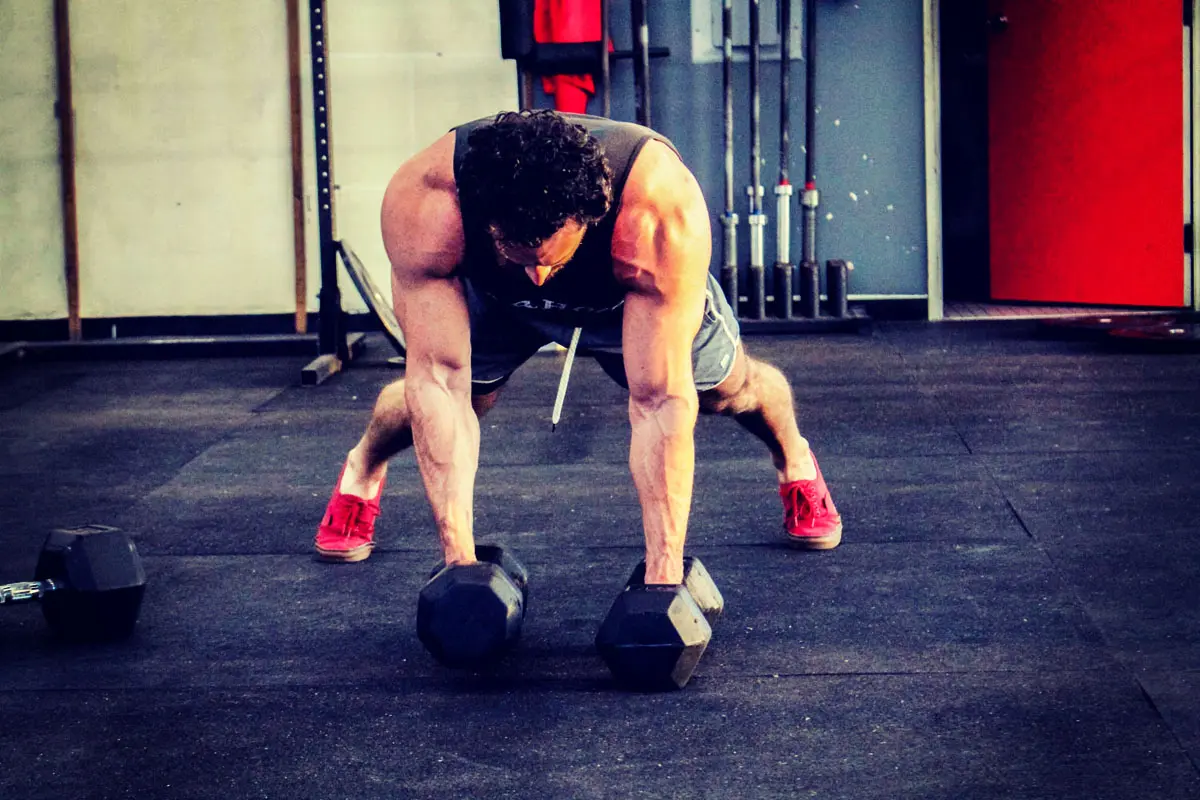
Improved Fat Burning
You must keep your heart rate elevated to burn body fat while doing cardio. There are many gurus that say exercising at 50-80% of your maximum heart rate is best, or you only do cardio in a fasted state.
Scientific answers are nice, but the simple answer is exercise hard enough that you can barely carry on a conversation — taking a couple of breaths between sentences.
Push yourself.
Improved Appetite
I’m a reckless eater. If I don’t exhibit control, I eat enough for two to three people. Studies have shown and my personal experience suggests that performing a form of cardio improves appetite. You’ll want to eat healthier foods.
If you struggle to eat enough food to build muscle, performing a HIIT routine a couple of times per week could improve how much you want to eat. It can help you get some more nutritious and calorie-dense foods into your daily intake.
Improved Conditioning Levels
It’s pretty embarrassing to walk into a quiet second-floor office while you’re gasping for air. If you’re like me, you probably stand at the top of the stairs before you walk in. Improving your conditioning will allow you to lift more, and be more physically active without it taking everything out of you.
Improving your conditioning means your heart will pump blood more efficiently and use oxygen more efficiently.
Improved Recovery from Strength Training
Cardio maintains an elevated heart rate, which means you’re getting more nutrients to your muscles. Performing some low- to moderate-intensity is great for active recovery.
Active recovery helps flush lactic acid, increases blood flow, and improves your recovery. You won’t be as sore and your muscles will grow.
Is Cardio Bad for Muscle Gain?
Cardio burns calories and if you do not eat enough to cover the calories burned during cardio, you have a chance of stalling your muscle growth. If your sole purpose is to build muscle and you are not eating enough food to stay in a calorie surplus, you will not build any muscle.
Another drawback to cardio is the idea of over training. Your body isn’t able to recover quick enough, so you’re never fully recovered before your next workout.
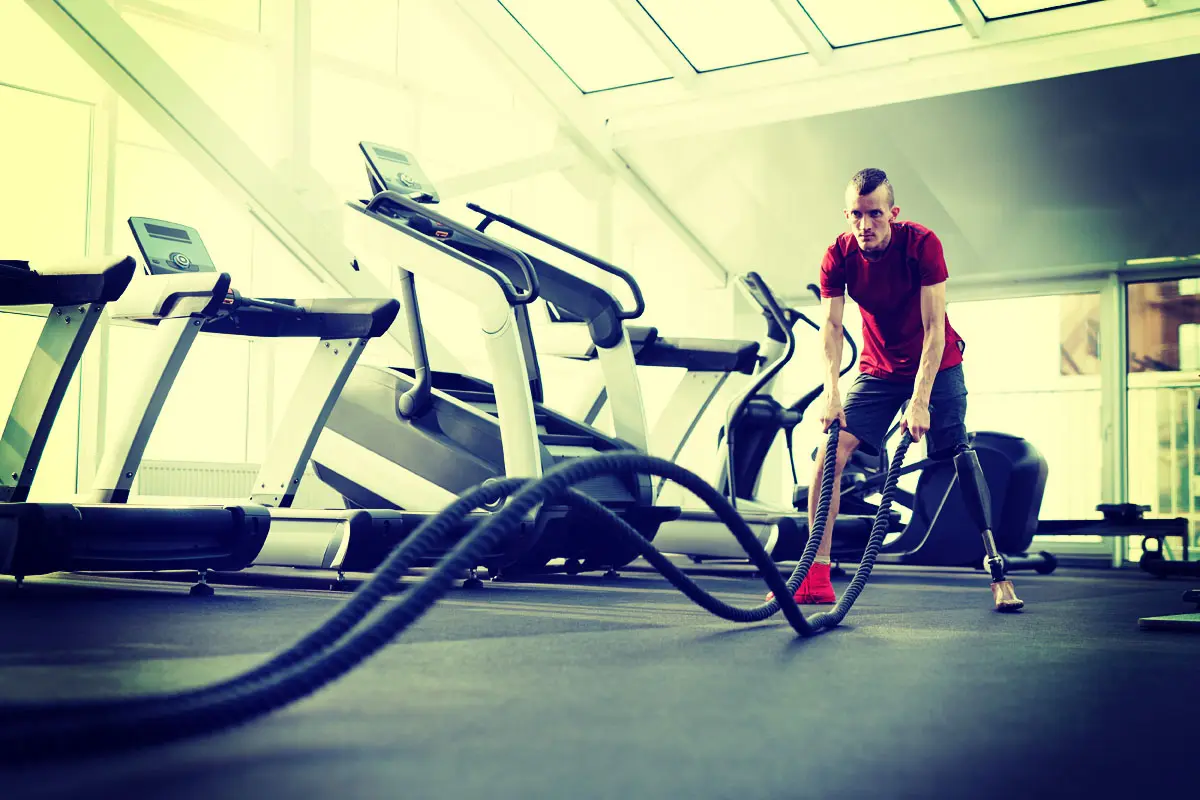
Over-training is a topic I try to stay away from, but there is a correlation between muscle building versus the amount of stress you have.
Stressors include:
- Anxiety
- Depression
- Physical Exercise
Generally, if you’re pushing your body to the max lifting weights, add in long sessions of cardio, and not eating enough or getting enough sleep, you aren’t going to recover. Reduce your stress, improve the quality of food you eat, and get enough sleep.
This sort of over-training stalls your progress. Unless you can add more rest, food, and relaxation to your life, there is a possibility of over-training if you add in too much cardio.
How Much Cardio is Too Much?
There are many benefits to adding cardio to your routine regardless of your goals.
Light to moderate cardio for 20 minutes post-workout 2 days a week will improve your recovery, help your metabolism, and increase your appetite. This means that not only will you burn body fat but you will build muscle and improve your conditioning. If you do not want to lose any more body fat, eat extra nutritious calories to make up for the extra calories burned.
If you are looking to burn body fat and limit muscle loss, ensure your diet is up to par and you are eating plenty of protein.
Light to moderate cardio for 20-30 minutes post work out 3-4 times per week is going to be a great start. You will burn a moderate amount of calories while saving your muscles. Cardio combined with a great workout routine and eating plenty of healthy foods will give you great results.
If you are very overweight and your main objective is to lose as much body fat at a safe rate and willing to sacrifice some muscle mass, I invite you to try to walk for an hour every morning in a fasted state.
Studies suggest that performing cardio in the morning in a fasted (nothing eaten since dinner) state, your glycogen and carbohydrates are lower, so your body will burn body fat for energy.
Walk at a moderate pace that you can keep up for an hour. Going ‘all out’ and pushing yourself too hard will result in sub-optimal fat burning.
Cardio or Weights First — The Final Verdict
I suggest adding cardio to your routine. The amount and timing of your cardio comes down to your personal fitness goals. Refer to the table at the top of the article, or learn to listen to your body. Performing cardio on off days can also help with active recovery.
You’ll burn fat, lose weight, improve your muscle-building efforts, and improve your conditioning levels. Just think about it — not being out of breath and getting flop sweat all over your intimate partner during fun times.
If you’ve found this article helpful, leave a comment below along with answers to these questions:
- How often do you do cardio per week?
- What is your favorite activity to do for cardio?
References
- Strength Training Prior to Endurance Exercise: Impact on the Neuromuscular System, Endurance Performance and Cardiorespiratory Responses
- Specific Training Effects of Concurrent Aerobic and Strength Exercises Depend on Recovery Duration
- The Effects of High Intensity Interval Training vs Steady State Training on Aerobic and Anaerobic Capacity
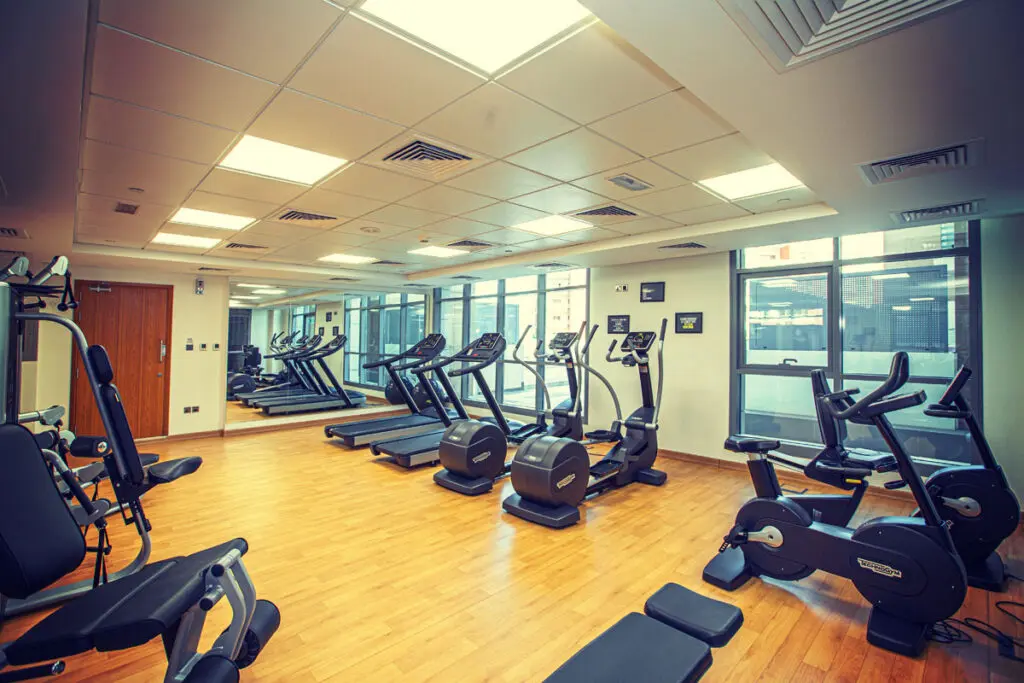
thanks for this. as a long distance runner, when i was younger. now bodybuilding, i have found i have an edge over most guys, that my lungs dont wear out before my mucles.
Conditioning plays a huge part in your endurance and your ability for your body to flush out lactic acid. I think the stigma of using cardio for a weight loss catalyst has ruined the idea of training for conditioning.
People get used to going up a flight of stairs and being winded, when they shouldn’t be. I’m working to improve my conditioning as well.
This was really helpful. I’m in the Army NG and I’ve been trying to train for my PT test while also trying to build my ideal body. Your articles have really changed my mindset towards training and I am seeing results, so thank you. I probably do cardio about 3 times a week, a long run, a hill run, and HIIT in addition to a full body workout 3 times a week.
Thanks Keith. It means a lot to know that I’m able to help people out. There are a lot of things that people don’t understand about weight training and strength training such as adding an explosive or power movement to your routines will help build strength. Things such as a hard sprints, uphill sprints, etc actually helps develop power in your hamstrings and throughout your body.
Good luck on your PT test, I know it is a very strenuous test. If you need any advice or help, feel free to contact me!
Cutty
Great read. I’ve read a study that compared a group doing strength training and a group doing strength training and endurance (cardio) training. After 12 weeks the group doing pure strength showed 8% growth in their strength and size vs 4% of the other group… With that in mind, I want to cut up and don’t want to lose my gains, what is the best way? I am thinking of just cutting calories and keeping my macro ratio consistent with no cardio.
Yes, there are many articles which seem to favor both sides. I wrote my take on what I feel works best if you look at the whole picture of being healthy, great conditioning, usable strength, etc.
If you are wanting to cut up without losing gains, keep protein high, look into intermittent fasting and cutting a small (200) calories a day and see how it works. A massive cut in calories regardless of what type of food you intake will result in losing muscle.
There is no “best” way, but what works for you and your body. When you look at a realistic view of gaining 8 pounds of muscle a year (just a number), a 4% decrease would make it 7.68 lbs of muscle gained. There are too many studies about natural gains and human possibilities so I don’t want to open that can of worms.
I would say stay with what is working, cut some calories and see how it works out for you.
Keep me updated,
Cutty
I know exactly what your talking about with overtraining, I did that in high school, I would try and get fit, but I would end up doing to much, and get sick, due to lack of sleep etc. I theorized that doing cardio would be beneficial to muscle building for the sole purpose that if before training your heart rate is 80-90 beats average on resting, then doing cardio you slowly drop your heart rate to 60-70 beats per minuet, your heart doesn’t have to contract as fast and therefore ultimately uses less calories during the day that can go to building muscle. I also have another theory, say you follow 1 gram of protein per pound of body weight right, ok then lets say you eat 100 carbohydrates, ok that’s 400 calories, then lets say you burn 400 calories walking on the treadmill 4miles an hour with incline of 5.0 that’s what I often do with running added in between, and burn 400 calories, that 400 calories will that cancel out my carbohydrates? And allow me to continue to build muscle and eat a couple sandwiches a day? I’m 5’9 210 and want to shred but still maintain my strength I really don’t care about mass I rather be a Bruce Lee than Arnold Shzanegger.
As long as you keep working hard and progressing in the gym you will reach your goals. :)
Cutty
I have always been a skinny guy and always weighted less than I want to.
But during the past year I have been lifting weight seriously and constantly and I feel bigger and stronger than before.
Even though I have i bit problems with my apetite I eat as much as I can and try to seriouslr gain weight also.
In my town we have a floorball-team which I have been active in before and I´m scared to death that playing intense floorball practice for 90 minutes a weak will reduce my gains an even make them disappear.
Do you think that would affect my weight -and muscle-gaining if I started train floorball once a weak, if we presume that my appetite will still be the same (because of personal exxperience it wont affect so much). ?
Honestly I would not worry about your gains and have fun playing football as well. We train to get bigger and stronger, but what good is training if it keeps us from doing things we enjoy?
Protip for more calories: sour cream, cheese, vitamin D milk, olive oil, peanut butter, heavy cream, and bacon will all add some calories to your diet and you can add them into things you already eat.
If you are already lean and want to gain weight, eating an extra 400 calories a day adding cheese and/or sour cream to your food will be tasty and will help you make gains.
If you drink protein shakes, use vitamin D milk instead of water or skim milk.. add in some heavy cream or peanut butter (if flavor would be ok) and you are going to get plenty of extra calories without more volume of food.
Hope this helps,
Cutty
Great article, in reference to cardio in the morning you state “going ‘all out’ and pushing yourself too hard will result in sub-optimal fat burning.” Would you avoid HIIT training or high intensity cardio in the morning in a fasted state?
HIIT is great, I’ve found that LISS works best for me and other clients.
I would invite you to try out a month of each and see which you’ve gotten better results with.
If you do, I would love to hear your results.
Cutty
Hi i am doing your 5 day dumbbell only workout and all is going good. I came upon this article and was wondering if it should be done right after the weight lifting sessions or should I wait a bit and say down a protein shake and then do the cardio. Thanks.
Cyrus,
That’s more of a personal preference than anything. Try both ways and see what you like best. I sometimes get an upset stomach if I down a shake and then do cardio so it’s pretty well up to you. The “timing” that a lot of people talk about has some merit but for 99% of the people at least that come to this site don’t need to worry about it.
Try out doing it both ways and let me know which way you prefer.
Cutty
I Do it, before starting with my exercise in order to warm up my body… 10-20 Min max to activate my system.
It works perfectly for me… highly recommended.
Have a great day!
That’s great. I had some ankle issues that keeps me from freely walking all of the time for now and I have been using more of an active warmup more or less some aerobics instead and it works great for myself as well.
Well I have to tell you. I lost a lot of weight doing cardo. But I also lost a lot of muscles. My man boobs were worse abs side of my body lose skin not to saggy. I took protein. I also talked to trainers who conformed that cardio will take muscles away and also drain you! Told me to do it only once a week, or for me right now. Not at all. To fine another exercise that uses weights it doesn’t have to be heavy and do it on a cardio day that should do the trick. So I will try that and let you all know :)
Thank you for sharing your experience! I like to tell people to use cardio as a “workout for your heart” instead of a calorie burner. If you couple cardio with lifting and eating plenty of nutritious foods, you won’t have an issue. Keep your ticker healthy, but don’t lose your muscles doing it :).
Good luck!